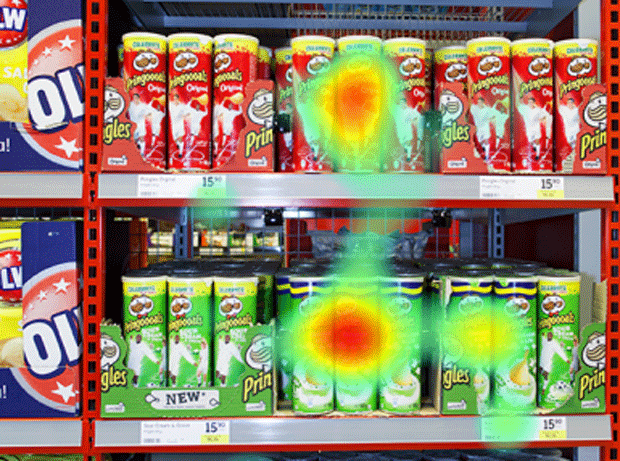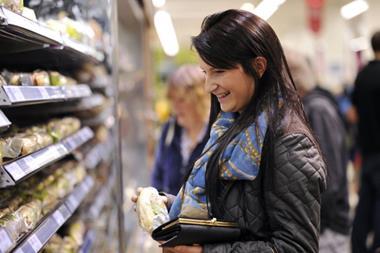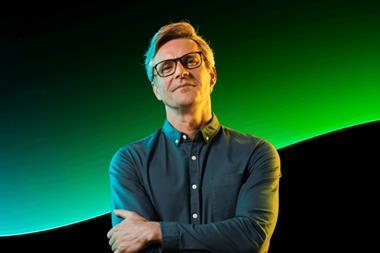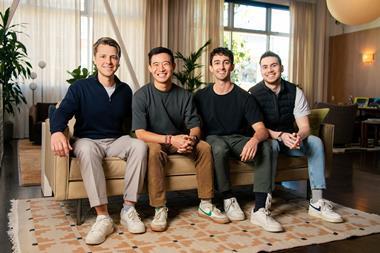
Chances are, the average shopper pushing a trolley around Tesco is unaware of how much they have in common with superstar footballer Lionel Messi. They probably don’t realise how the promotional blizzard of the last few years has slowly fizzled away the part of their brain that remembers promotions, either. And it’s likely the vast majority have never really thought about exactly why they ignore the special offers at the entrance to a supermarket, although, when they think about it, they realise they always do.
These are just three of the curious facts that emerged when The Grocer set out to investigate how supermarket shoppers shop in 2013. We examined how they react to promotions, where in store they snap up special offers, where they speed up the trolley and where they slow it down.
We also looked at how cutting-edge technology used by football clubs to decide whether or not to splash out £86m on Gareth Bale is also being used by supermarkets to decide whether their new £10m superstore should put the deli counters in order of butcher, fishmonger, cheese - or just the opposite.
The findings provide a fascinating insight into current shopping behaviour - and blow much of the accepted wisdom out of the water.
For the first plank of our investigation, we looked to the established technology of eye-tracking. We teamed up with research company Marketing Sciences to give five shoppers aged between 18 and 50 hi-tech eye-tracking glasses and a simple shopping list, although they could add other items to their trolley if they wanted to.
Disguising the aim of the research among other tasks to avoid what Marketing Sciences describes as an “artificial shopping experience”, we then sent them into two different supermarket chains, where the eye-tracking technology recorded their every glance, highlighting the hot and cold spots in various categories as well as how long they stopped at each fixture.
These findings were then combined with post-shop interviews. “The adage that one image is worth a thousand words holds true whenever clients see the footage, so the power of eye-tracking should not be underestimated,” explains Marketing Sciences head of retail Rachael Rockey. “But it cannot tell you why or whether shoppers understand the product or the message. It is not a window on shoppers’ thoughts. We combine the visuals with robust exit interviews to establish awareness, recall and claimed behaviour.”

How to make PoS memorable
The results from Marketing Sciences’ eye-tracking experiment showed that in both supermarkets, PoS was looked at by every single shopper. However, less than half of them recalled any details of what they saw.
“PoS may have only been recalled by a small percentage but we know it was looked at,” says Marketing Sciences head of retail Rachael Rockey. “The challenge for brands is to convert those views into conscious thoughts, so the offer is remembered.”
With this in mind, Rockey offers a few pointers that retailers and brands should consider in order to deliver more memorable PoS:
- Less is more: “Only use one message per aisle. If this is not possible, make sure that messages are absolutely distinct from one another in look and feel in order for shoppers to clearly distinguish between the two.”
- The eyes have it: In most aisles, eye level is most effective, as the participants rarely looked up or down when shopping. The exception is with yoghurts and condiments, where shoppers are very brand loyal and will seek out their favourite brand.
- Don’t be shy: You have just seconds to make an impact on shoppers so be big and bright, use large images and bold colours. Red plays best with men. And, importantly, use as few words as possible.
- Keep it consistent: Ensure that the colours, fonts and images used in promotions for particular brands outside stores are replicated within them.
- And make it instant: Shoppers glance at PoS. They rarely spend time hanging around studying them, so make sure your message can be communicated quickly.
- Queues can be useful: If you are using hanging boards, the best place to hang them is over the till when shoppers are stuck in a queue and looking around for a distraction.
One of the most startling revelations was how little impact promotional PoS material seems to have. Shoppers appear to have become immune to it - it’s not that they don’t see it, it’s just they don’t care enough any more to pay attention. Even though the software showed that every single pair of eyes locked on to at least one piece of PoS during the trip, only two shoppers could remember even scant details of what they had seen, suggesting that supermarkets urgently need to rethink their strategies.
“Half the challenge is getting them to notice the messaging, the other half is making it engaging enough so they remember it,” says Rockey. “More needs to be done to grab people’s attention if supermarkets want shoppers to deviate from their list and purchase more.”
This advice is especially relevant to the crisps and cereal aisles, where the dwell times shot up, suggesting shoppers were open to ideas. Whereas shoppers glanced at milk for an average of eight seconds, they spent 39 seconds browsing cereal and almost a minute gazing at crisps. “Shoppers expect a number of offers on these products,” says Rockey. “They are not as brand-loyal in these categories so engaging PoS and promotions really matter.”
Gondola ends
Another part of the store where promotions really matter to retailers is the gondola ends. Arguably they are even more important for the suppliers, who pay to feature in them. So is it worth it?
“End of aisles work best for triggering spontaneous purchases and big brand treat-like products like wine, chocolate and chilled pizzas,” says Rockey, who adds that every single item bought by our shoppers from the gondola end was an incremental “treat” buy.
However, she also says “everyday” items like cheese, fruit juice, packet rice, tea bags and cat food “tended to be missed because shoppers expect to get better offers from within the aisles on these products” - and would still check the aisle for it. And, significantly, shoppers weren’t keen on the chilled gondola ends because they tend to appear early on in the shopping trip.
“This is because these are among the first ‘deals’ shoppers tend to come across in the supermarket and there is an element of lack of orientation at this point,” says Rockey. “There is also the mindset of it being too early on in the shopping trip to be stopping and browsing when there is still a lot of shopping to be completed.”
By a lot of shoppers. Asda claims it gets 18 million shoppers a week, Tesco that it gets more than twice that. While there is plenty of insight to learn from the established method of eye-tracking, practical restrictions mean it is limited to determining how a sample of shoppers shop. For an overarching view of how thousands of shoppers move through a supermarket, retailers and brands are turning to a research and analysis company more used to looking at superstar footballers.
SRI researchers operate similar methods to Prozone, the performance analysis company that works with football clubs across the globe, including Real Madrid, Barcelona, Chelsea and Manchester United. Prozone allows football clubs to explore, in minute detail, every single movement made on the pitch by every single player throughout even the most frenetic 90 minutes. Analysis is then provided by a blend of animation, video and statistics. Since launching in 1998, it’s become an essential part of a football club’s armoury.
Add this level of insight into the mix, as we did for the second plank of our investigation, and you get an even more robust - and revealing - insight into how consumers really shop. Just as Prozone films every second of a football match to determine how many times Eden Hazard glides past a creaky Manchester Utd defender, SRI cameras fixed up in the rafters of supermarkets can monitor how many times shoppers glide past that expensive promotion at the front of the store.
“The idea to apply it to shopper behaviour has been bubbling around for years, the technology is nigh on identical,” says SRI Insight MD Charles Offer.

“Not yet in shopping mode”
Morrisons and Tesco, along with brands including P&G, Diageo and Kraft, are all using SRI to study mass movement of shoppers in order to understand their overall behaviour. Offer says although every single shopper shops slightly differently, if you study them in enough volume, aggregate behaviour becomes apparent and patterns begin to emerge. Interestingly, SRI cameras draw similar conclusions to the results from eye-tracking.
“We did a project with 20,000 shoppers, looking at how they behave when they enter a store, and very clearly, they aren’t yet in shopping mode,” says Offer. “They are fiddling with their phone, their shopping list or their trolley. Almost without exception, they missed the heavyweight offers at the front of the store. Less than a handful noticed what was going on. Perhaps there is a latent awareness going on that pays back later on, but the evidence suggests placing products at the front of the store isn’t effective.”
The verdict on gondola ends was not much better - again echoing Marketing Sciences’ findings - with Offer noticing shoppers still checked the aisles for alternative promotions on the items they planned to buy.
“Shoppers appear to use the gondola ends as much for navigation as product selection,” he says. “They might see something they want but they still go to the main aisle to see if there is a competing promotion. So it’s not so much that they ignore the products in the gondola ends, but where they select the product from has been surprising. And it’s generally the case with products on their shopping lists they already planned to buy.”
Offer also highlights the strengths of using “real evidence” to interpret sales figures. He uses an example of where the specific detail provided by SRI showed that what, on the surface, appeared to be a poor sales perfomance, was just the opposite.
“If you know how shoppers are moving, you can positively disrupt that behaviour or influence it to make it better for them”
“We did a project where the product was located in five different parts of the store and found the till location was only responsible for 2% of the volume purchased. The natural assumption is 2% isn’t very good. However, when we factored in the rest of the research we established the 2% was a genuinely incremental number. The shoppers had all finished their shop. None of them had bought the item in any of the other four areas. If it wasn’t at the till they were never going to buy it. So while 2% didn’t seem like a high percentage, it was 100% incremental, and therefore quite valuable.”
SRI also uses a technique it calls “conversion funnelling” to provide detailed analysis on what happens when a shopper approaches a product and thinks, ‘hmmm’. “Traditionally, retailers look at a rate of sale. They know a multipack of Coca-Cola sells 40 units per day, per store, per week. But what our model does is look at the browse percentage, the engagement percentage, then the selection percentage, then the sale percentage. So you can very clearly see 1,000 people stopped at the multipack, 200 browsed it, 100 engaged with it, and 40 bought it. It enables retailers to get a true, comprehensive, sense of the shoppers who dropped out of the conversion funnel, and at what point.”
Retailers are utilising the SRI information to shape the entire shop floor. Morrisons spent eight weeks studying the movements of thousands of shoppers to see how they moved through its Market Street. Tesco described the insight provided by SRI over Christmas as “unique and illuminating”. And one retailer in Australia embarked on a year-long project where SRI spent time recording how shoppers move through the existing store. Offer says the next step will see the retailer start experimenting, tweaking the shop floor in all manner of ways and then watching how shoppers react.
“Half the challenge is getting them to notice the messaging, the other half is making it engaging enough so they remember it”
Rachael Rockey
“They are throwing in a load of creative execution, a massive number of changes, alterations to range, space, layout, different promotions and new messaging. By the end of it, we will know really clearly how shoppers respond, positively or negatively, to a whole load of potential store layouts and communications.”
The findings also tend to disabuse retailers of the notion that shoppers shop in a linear fashion, he adds. “In reality, they are all on individual missions. What we do is show them how to change things to influence shopper behaviour. Everyone knows what people have been buying through things like Clubcard, but no one knows what shoppers are doing en route to making those purchases. That is what makes the difference. If you know how they are moving, you can positively disrupt that behaviour or influence it to make it better for them. Then you can drive commercial returns from that information as a result. It’s like the missing link.”
Welcome news for anyone trying to sell to an ever more discerning customer. Although perhaps it’s little surprise brands and retailers are finding ever more inventive ways to plug the gap, whether they use the eye of the shopper, or the eye in the sky, to decide where to splash their cash.



















No comments yet